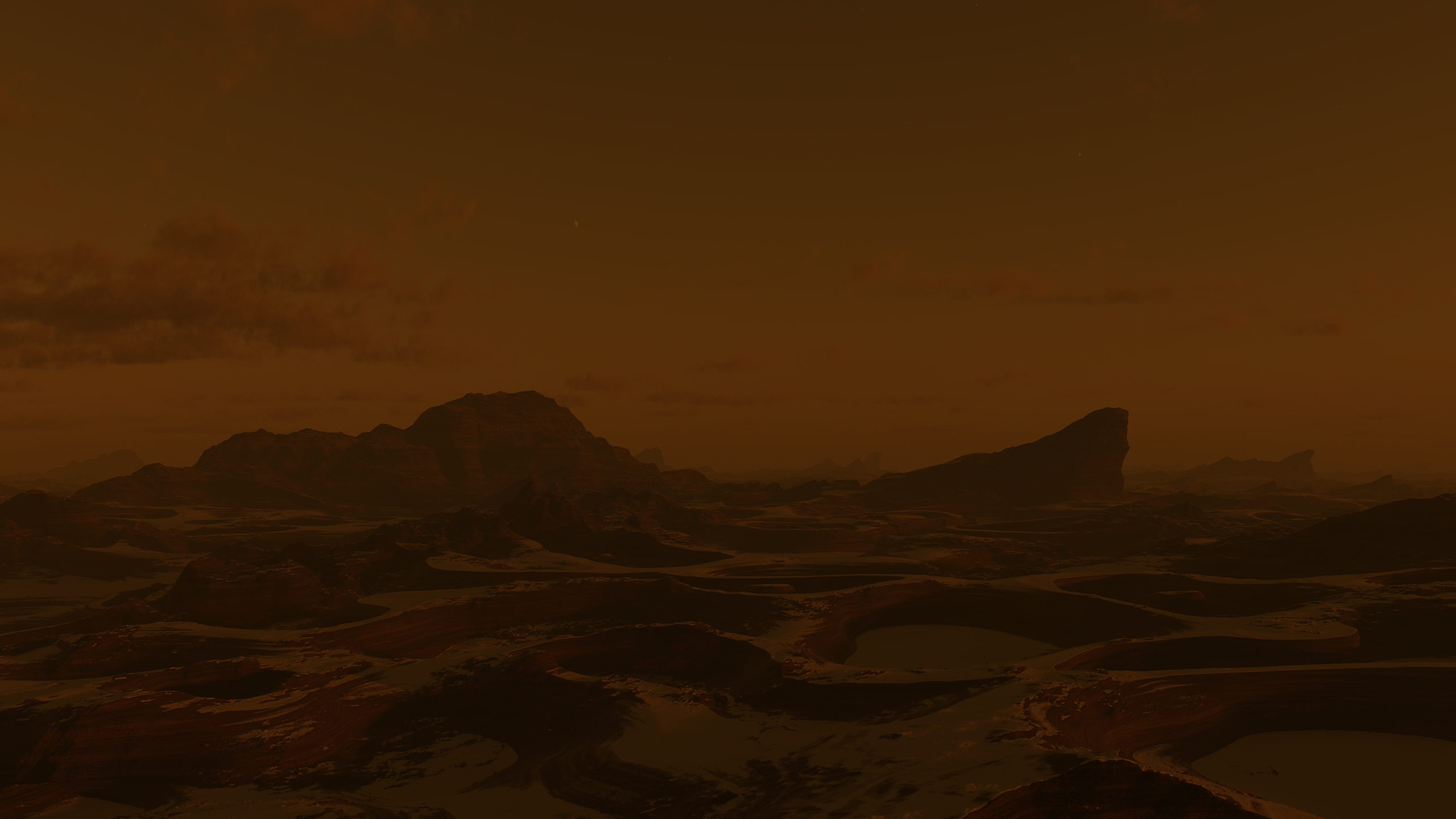HOME | DD
 devmoh — Red Worlds - Trappist-1e V. 3
devmoh — Red Worlds - Trappist-1e V. 3

#astronomy #cgi #exoplanet #scientificillustration #terragen4
Published: 2022-07-17 15:51:44 +0000 UTC; Views: 1917; Favourites: 2; Downloads: 6
Redirect to original
Description
FOR HARDCORE EXOPLANET FANS ONLY: IT IS RECOMMENDED TO VIEW THIS IMAGE IN A DARKENED ROOM:
Another attempt to show the surface of Trappist-1e, possibly the most "Earth-like" planet in the Trappist-1 system.
en.wikipedia.org/wiki/TRAPPIST…
en.wikipedia.org/wiki/TRAPPIST…
It is certainly not a second Earth. It always faces the same side to its parent star and is smaller and cooler. The solar radiation here is less than 2/3 of the terrestrial value. Should it have a sufficiently dense atmosphere, however, water could exist on its surface, as liquid water, snow and ice.
I would like to limit myself here to the representation of the light conditions:
On Trappist-1e it is always dim, even if the sun is always in the sky due to the bound rotation, because the small red dwarf produces hardly visible radiation and this little light is also still in the red region of the spectrum, where our eyes are less sensitive.
Here, on an imaginary surface, the sun Trappist-1 is about 6° above the horizon and illuminates the area, together with the scattered sky light, about as much as a living room lit by a dim light bulb and the light has a distinct orange-red hue. One could look directly into the large solar disk here in this twilight zone near the "day/night" boundary without being blinded. The brightest stars are already visible in this twilight and in the sky at this time there are two more planets of the system: Trappist-1f a bit left of the center of the image and Trappist-1g as a small dot further up right of the center.
























